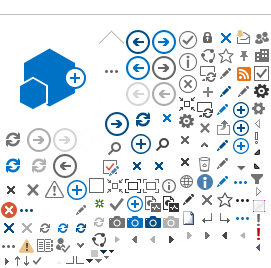| | 1. Headline |  | For most working in the field of nuclear energy, the American Nuclear Society conferences are frequently attended to learn about the latest innovations, present their newest research, and spark new hypotheses. But the best ideas aren't always found in the lecture halls. In the case of the latest collaboration between Idaho National Laboratory and Oregon State University, lunchtime was the breeding ground for innovation. "Like many good things, I recall that this idea was hatched over lunch at an ANS conference a few years ago," said Mitch Meyer, the Characterization and Advanced Post-Irradiation Examination director. The course entitled "Nuclear Fuel Qualification – Post Irradiation Examination" was taught by Meyer and 11 other INL researchers with Wade Marcum, an associate professor at Oregon State University, facilitating the course. This inaugural class had 16 students, but faculty members also sat in during many lectures. "There was a lot of curiosity about the topics we were presenting," Meyer said. Mitch Meyer The unique course covered topics such as fission gas measurement, electron beam characterization and fuel performance codes. "The faculty and university very much appreciated this exchange and opportunity as it fills a gap in the present teaching curriculum and connects us with a premier research institute in a way that we have not before," Marcum said.
Finding volunteers at INL to teach the course wasn't difficult for Meyer, and he ended up with more volunteers than sections to teach. Aaron Craft, who taught the lectures on neutron radiography, attributes this to the passion scientists have for their work. "Scientists like talking about what they do. Since they're the subject matter experts, they can talk about it in more detail and in more breadth," Craft said. To continue to fulfill INL's mission of demonstrating nuclear energy as the cleanest and most reliable form of energy, Craft believes this sort of interaction is key to inspiring the future wave of nuclear engineers. "We have to be advocates for our science in the public as well, which includes classrooms teaching the next generation of students."
After building the curriculum through a series of conference calls with Marcum, discussions with INL researchers, several hours of work on nights and weekends, and approval of the Oregon State nuclear engineering faculty, the class was taught by INL researchers both in person and via video conferencing. Overall, the class was well received by the students. "The comments that I personally received were that they enjoyed the course subject matter," Marcum said. "But mostly they appreciated the insightful topical delivery that could only be provided by a national or international topical expert on that subject matter."
"No other university provides this type of course," Craft said. "When we get bright nuclear engineers or materials scientists in here, they haven't had an education on post-irradiation examination or nuclear fuel qualification anywhere. It doesn't exist, so we end up teaching them from scratch."
Although the idea for the course began over a meal, the collaboration is one of the many that have occurred as part of INL's longstanding partnership with the university through its National University Consortium. Established in 2005, the NUC is a partnership between INL and five prominent research universities, Massachusetts Institute of Technology, North Carolina State University, the Ohio State University, the University of New Mexico and Oregon State University.
The lasting impact of the most recent collaboration between INL and Oregon State University is already being felt. Meyer plans to host a few interns from the university this summer; Craft has already been contacted by graduate students to run experiments at the Neutron Radiography Reactor that he works with; Craft also plans to host a faculty seminar at INL and assist Oregon State with their camera-based imaging system at their nuclear reactor; and Meyer is hoping this course will be the first of many: "I'm already thinking about the next one."
| 3/5/2018 | March 2018 | | | 1. Headline | 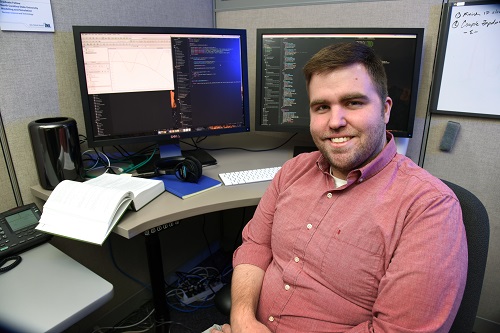 | In September 2017, Idaho National Laboratory announced its first group of 11 INL graduate fellows. Three months later, the first two students, Casey Icenhour and Konor Frick, were accepted to Ph.D. candidacy and arrived in Idaho Falls to begin their work with INL.
A collaboration between INL and universities, INL's Graduate Fellowship program is aimed at identifying exceptional talent to continue INL's mission of demonstrating nuclear energy as the cleanest and most reliable energy source. The program is also built to offer mentoring and financial support to students beginning or currently enrolled in Ph.D. programs. During the first years of their doctoral programs, students spend their time at their universities completing coursework while collaborating with their INL mentor and Ph.D. adviser to develop a research plan. Once coursework is completed, graduate fellows spend the last years of their Ph.D. program at INL conducting research as outlined in their research plan.
Frick and Icenhour, both from North Carolina State University, began the second portion of their fellowship earlier this year, relocating full-time to Idaho Falls to complete their doctoral research. Frick finished his Ph.D. program shortly after arriving in Idaho, successfully defending his dissertation in nuclear hybrid energy systems at the end of January.
Icenhour is still currently pursuing a Ph.D. in nuclear engineering and spent the last year-and-a-half at Oak Ridge National Laboratory through the Office of Science's Graduate Student Research Program. Before hearing about its INL Graduate Fellowship program, outside of INL's general mission, Icenhour wasn't very familiar with INL. However, through another NCSU student, Alex Lindsey, who had worked with INL previously and is now an employee, Icenhour and his Ph.D. adviser, Steve Shannon, saw a valuable connection between his thesis topic and the modeling and simulation work—i.e., Multiphysics Object Oriented Simulation Environment (MOOSE)—being done at INL. Currently, Icenhour is working on expanding the MOOSE framework to include his work on electromagnetic wave propagation. "It's been a boon to my work because instead of just focusing on that and only that, I'm starting to think more about the applications of my research," he said.
Rich Martineau, Icenhour's INL mentor, sees the benefits for everyone involved. For the students, Martineau gives "top-flight mentoring during the graduate research phase" to make sure that that they get the maximum benefit out of "a couple of their best years of research." Martineau recognizes the level of responsibility INL mentors have in order to make sure this is a positive experience for the incoming students. His advice to INL mentors? Challenge the students. "The only thing that matters here is that Casey is successful."
Although his time at INL has been short, Icenhour also has advice for other INL graduate fellows who will be arriving in Idaho Falls in the months and years ahead. "You need to be willing to step outside your group and be willing to engage with other researchers."
He noted that being at a national laboratory is very different from academia. "The folks around here are working on a broader class of problems," Icenhour said. As a Ph.D. student studying a very specific area, he said it can be a "culture shock." But he thinks this ultimately benefits students. "It makes you, as a grad student, a better researcher."
Frick also has advice for students once they get to INL: Have a detailed research plan. "The goal of this program is to have students earn their Ph.D.," Frick said. "Create a well-outlined research plan with your INL mentor and Ph.D. adviser to make sure all parties agree the research done at INL enables that to happen."
As the program continues to grow, Michelle Bingham, University Partnerships director, sees the INL Graduate Fellowship program filling the talent pipeline and continuing to bring in qualified employees already familiar with the work being done at INL. She also envisions this already-competitive program becoming even more familiar across the country. "Over time, the INL Graduate Fellowship will become a well-known, prestigious program that students vigorously pursue in order to differentiate them from their peers," Bingham said.
For more information about the INL Graduate Fellowship program and other student opportunities at INL, contact internships@inl.gov or visit inl.gov/gradfellows.
| 3/5/2018 | March 2018 | | | 2. Research | 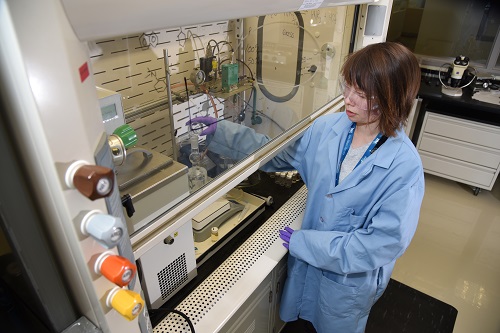 | By Paul Menser As the United States seeks a stable domestic supply of rare-earth elements —essential to high-tech instruments and electronics —researchers at Idaho National Laboratory (INL) are looking to the salvage yard to see what might be lurking under the hoods and in the doors of light-duty cars and trucks. Rare-earth elements (REEs) are not scarce but scattered, meaning they typically can’t be found in economically exploitable concentrations. They have become increasingly sought after, however, since they are used in high-strength magnets, electric motors, and consumer goods like laptops, tablets and cellphones. A single smartphone can contain nine rare-earth elements alone. Ruby Nguyen and Devin Imholte both specialize in supply chain analysis for INL and the Critical Materials Institute (CMI), an Energy Innovation Hub funded by the U.S. Department of Energy. In CMI’s first five years, there was a focused effort on computer hard disk drives to quantify what REEs could be recovered from the magnets inside them. Working with counterparts within INL and at Oak Ridge National Laboratory, the research indicated that recovering REEs from hard drives would meet less than 1 percent of global magnet demand. With rising sales of plug-in electric and hybrid electric vehicles, the focus has shifted to the automotive industry. Nguyen and Imholte proposed to study rare-earth metals in autos after reading a Frost & Sullivan market analysis of transportation and industrial motors. They contacted a number of salvage yards, eventually coming to an arrangement with James Boone of Intermountain Auto Recycling in nearby Rigby, Idaho. He also operates a business in Idaho Falls called iPull, specializing in parts. Intermountain buys about five vehicles a day at auctions and from insurance companies and repair shops. Working with Imholte and Nguyen, Boone will find the vehicle they want to examine and strip it down to parts, which he sells at cost to INL. These are sent to the INL Research Center (IRC) to be disassembled. The disassembled magnets are sent to the Center for Advanced Energy Studies for analysis. Determining the actual amount of REEs in vehicles is a challenge because REEs are used in small quantities across different types of components. Alternators, which supply a steady charge to a vehicle’s electrical system, are not a main source of REEs, Imholte said. In fact, none of the alternators in any of the disassembled vehicles have contained magnets. Magnets in conventional cars and trucks are generally used in devices that require high torque and back-and-forth motion. These include the motors that power windshield wipers, air-conditioning blower motors, engine cooling fans, seat motors, and power steering motors. And the speakers use neodymium in their magnets. Inventorying the components taken from a 2010 Ford F-150 truck, Nguyen and Imholte found 120 grams of magnet alloy containing 30 grams of neodymium in the front-door speakers. Neodymium magnets were also found in front-door speakers of a 2011 Chevy Silverado at a smaller amount: 16 grams with 4 grams of neodymium. In the 22 components across 17 different applications, the researchers found lower amounts of REEs than the literature indicated they should expect. Considering the time involved — removing the components took iPull two-and-a-half hours, getting the magnets out of them took 11 hours at IRC — cost will be an issue in any recovery efforts. Nguyen and Imholte have since turned their attention to a 2009 Toyota Corolla. “We’re eager to learn if the results from a sedan are different from a truck,” Nguyen said. After that, they have lined up a 2012 Honda Accord. “Nobody is doing this nuts-and-bolts disassembly on U.S. automobiles like we are,” Imholte said. “We’re really just starting to look at REE consumption in this way.” Several factors could change the game as the study progresses. After a sharp drop in 2012, some REEs experienced a steady price rebound due to the expansion of electric vehicles and the renewable energy industry. Prices for neodymium and praseodymium soared more than 50 percent in 2017. Analysts at Argonaut Ltd. estimate that use of magnets in electric vehicles and wind turbines will cause demand for neodymium and praseodymium to increase almost 250 percent over the next 10 years. Electric vehicles use roughly 1 kilogram more rare-earth oxides than conventional internal combustion cars, according to their research. Adamas Intelligence sees demand for magnet-oriented rare-earth oxides increasing to $6.07 billion by 2025, representing a compound annual growth rate of 17.4 percent from $1.44 billion in 2016. “The use of permanent magnet motors in new electric vehicle designs released in 2018 will be an interesting area to watch,” David Merriman, deputy manager for Roskill Information Services’ minor metals division, told Rare Earth Investing News in December 2017. “If more and more manufacturers switch to rare earth permanent magnet designs, demand will undoubtedly follow.” | 3/5/2018 | March 2018 | | | 2. Research |  | By Cory Hatch In the aftermath of natural disasters, damage to an electrical grid can slow the recovery effort and prolong human suffering. Last fall, Idaho National Laboratory researchers assembled a coalition of partners to design a system of microgrids that would enhance grid resilience by maintaining and restoring power after a catastrophic event or a cyberattack. During the coming months, the partners will demonstrate this technology in the small fishing village of Cordova, Alaska. When the microgrid system is finished, Cordova’s electrical grid will automatically reroute power to ensure that critical public services — hospitals, emergency shelters and other vital services — have electricity if part of the grid is damaged or disabled. The Cordova system will include switches that can isolate one part of a microgrid in case of an emergency. This “islanding” allows undamaged and critical parts of the grid to remain functional. In a sense, the system is smart enough to reconfigure itself. The project — Resilient Alaskan Distribution System Improvements using Automation, Network Analysis, Control and Energy Storage (RADIANCE) — could help get the lights back on in minutes instead of months. Idaho National Laboratory research scientist Rob Hovsapian said Cordova, because of its challenges, is an ideal location to build and test a next-generation system of microgrids. Cordova is in a far-flung nook of Prince William Sound. There are no roads connecting Cordova with the rest of the world. The only way to get there is by plane or boat. The city’s electrical grid is also isolated; there’s no physical connection to the outside world. The situation is compounded by harsh weather and a mix of hydroelectric, diesel and solar power generation, with a seasonal consumer demand that changes significantly throughout the year. In the event of a major natural disaster, such as the Great Alaska Earthquake of 1964, Cordova might be completely cut off. The city would need a power system that is smart and flexible enough to continue providing electricity for essential public services such as fire stations, hospitals and police departments. In September, the U.S. Department of Energy (DOE) Grid Modernization Initiative announced funding of up to $6.2 million for RADIANCE to the Grid Modernization Laboratory Consortium (GMLC). As part of the GMLC, INL researchers will lead a team that includes scientists and engineers from Sandia National Laboratories and Pacific Northwest National Laboratory. Partners include the Alaska Center for Energy and Power at the University of Alaska Fairbanks, the City of Cordova, the Alaska Village Electric Cooperative (AVEC) and the Cordova Electrical Cooperative. The GMLC is part of the Grid Modernization Initiative, a comprehensive DOE-wide focus to help shape the future of the nation’s grid. Hovsapian’s power and energy systems group at INL recently assisted with the installation of a microgrid for Native American trust lands at Blue Lake Rancheria in Northern California. The microgrid provides power for an American Red Cross Emergency Shelter, among other services. The Cordova project builds on lessons learned at Blue Lake Rancheria, Hovsapian said. “We expanded our research from a microgrid to smart reconfiguration of a microgrid,” he said. When combined with next-generation grid sensors, hydroelectric storage, battery storage and wind energy, Cordova’s system of microgrids should remain partly functional even under extreme circumstances such as natural disasters or cyberattacks. The eyes and the ears of Cordova’s microgrid system will be state-of-the-art micro-phasor measurement units (PMUs), equipment that monitors changes in the grid in real time.
The micro-PMU takes measurements of power quality, harmonics and instability at a very fast rate.
Based on highly detailed information from the micro-PMU, devices called microgrid controllers can make automated decisions about where to send the power by simultaneously coordinating loads, generation and storage.
“The controllers work in coordination with the existing system to reduce fossil fuel consumption, improve power quality and enhance resiliency,” said Mayank Panwar, INL’s principal researcher on RADIANCE.
Before the equipment ever reaches Cordova, the group will simulate the microgrid system in a 26,000-square-foot high bay at INL’s Energy Systems Laboratory.
There, real-time digital simulators allow the researchers to model how a power grid will perform before assembling the equipment in the field. The team can incorporate actual hardware into the simulation to learn how it will perform.
For instance, Cordova recently experienced a mudslide that took out one of its underground power lines.
“Let’s repeat that scenario and see how we recover from that,” Hovsapian said. “We take some of the risk away by developing these systems here, and we’re growing the science of microgrids in the process.”
By simulating those kinds of disruptions in the lab, researchers can help make Cordova’s grid more resilient in real life.
Another part of the project will establish data connections between Cordova and the 58 dispersed village communities under the AVEC. Electrical grids in the villages would then operate as a system of loosely networked microgrids in coordination with larger utilities in cities such as Anchorage and Fairbanks.
If one village experiences a damaged electrical grid, engineers can call upon the expertise and capabilities of other utilities in the network.
“How can you make those microgrids more resilient?” Hovsapian said. “You can leverage each other’s resources.”
The Power and Energy Systems group at INL hopes the technologies developed and the lessons learned at Cordova and Blue Lake Rancheria can help make grids more resilient across the United States.
| 3/5/2018 | March 2018 | | | 3. Project |  | Advancements in a fuel cell technology powered by solid carbon could make electricity generation from resources such as coal and biomass cleaner and more efficient, according to a new paper published by Idaho National Laboratory researchers. The fuel cell design incorporates innovations in three components: the anode, the electrolyte and the fuel. Together, these advancements allow the fuel cell to utilize about three times as much carbon as earlier direct carbon fuel cell (DCFC) designs. The fuel cells also operate at lower temperatures and showed higher maximum power densities than earlier DCFCs, according to INL materials engineer Dong Ding. The results appear in the Jan. 25 edition of the journal Advanced Materials and are featured on its inside front cover. Whereas hydrogen fuel cells (e.g., proton exchange membrane (PEM) and other fuel cells) generate electricity from the chemical reaction between pure hydrogen and oxygen, DCFCs can use any number of carbon-based resources for fuel, including coal, coke, tar, biomass and organic waste. Because DCFCs make use of readily available fuels, they are potentially more efficient than conventional hydrogen fuel cells. “You can skip the energy-intensive step of producing hydrogen,” Ding said. But earlier DCFC designs have several drawbacks: They require high temperatures — 700 to 900 degrees Celsius — which makes them less efficient and less durable. Further, as a consequence of those high temperatures, they’re typically constructed of expensive materials that can handle the heat. Also, early DCFC designs aren’t able to effectively utilize the carbon fuel. Ding and his colleagues addressed these challenges by designing a true direct carbon fuel cell that’s capable of operating at lower temperatures — below 600 degrees Celsius. The fuel cell makes use of solid carbon, which is finely ground and injected via an airstream into the cell. The researchers tackled the need for high temperatures by developing an electrolyte using highly conductive materials — doped cerium oxide and carbonate. These materials maintain their performance under lower temperatures. Next, they increased carbon utilization by developing a 3-D ceramic textile anode design that interlaces bundles of fibers together like a piece of cloth. The fibers themselves are hollow and porous. All of these features combine to maximize the amount of surface area that’s available for a chemical reaction with the carbon fuel. Finally, the researchers developed a composite fuel made from solid carbon and carbonate. “At the operating temperature, that composite is fluidlike,” Ding said. “It can easily flow into the interface.” The molten carbonate carries the solid carbon into the hollow fibers and the pinholes of the anode, increasing the power density of the fuel cell. The resulting fuel cell looks like a green, ceramic watch battery that’s about as thick as a piece of construction paper. A larger square is 10 centimeters on each side. The fuel cells can be stacked on top of one another depending on the application. The Advanced Materials journal posted a video abstract here: https://youtu.be/M_wOsvze2qI. The technology has the potential for improved utilization of carbon fuels, such as coal and biomass, because direct carbon fuel cells produce carbon dioxide without the mixture of other gases and particulates found in smoke from coal-fired power plants, for example. This makes it easier to implement carbon capture technologies, Ding said. The advanced DCFC design has already attracted notice from industry. Ding and his colleagues are partnering with Salt Lake City-based Storagenergy, Inc., to apply for a Department of Energy Small Business Innovation Research (SBIR)-Small Business Technology Transfer (STTR) Funding Opportunity. The results will be announced in February 2018. A Canadian energy-related company has also shown interest in these DCFC technologies. | 3/5/2018 | March 2018 | | | 4. University Highlight | 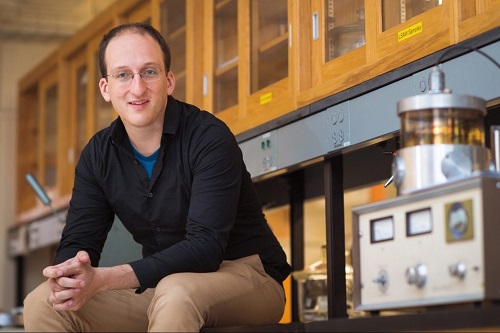 | In science as in life, the seeds of good ideas can lie fallow. Michael Short found one such seed in the form of a neglected memo from more than 70 years ago that led him to the scientific question that now drives most of his work. Short, the Norman C. Rasmussen Career Development Professor in the Department of Nuclear Science and Engineering whose lab is part of the MIT International Design Center, is fascinated by the fundamental definition of material damage at the atomic level. “We don’t have a way to measure radiation damage right now,” he says. “That makes it awfully hard to quantify.” Put a piece of metal into a nuclear reactor, he says, and despite any existing tests you might run on the material afterward, “you can’t tell me how much damage is left behind.” To read the rest of story, go to MIT's Spectrum's website. | 3/5/2018 | March 2018 | | | 6. Administrative | 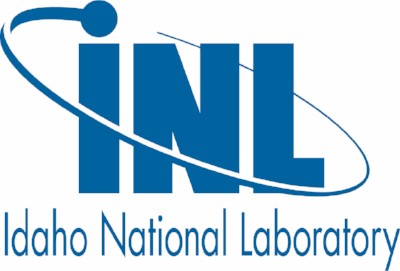 | Five postdoctoral research appointments are currently open on Idaho National Laboratory's career website. Postdoctoral appointments provide a mentored research experience that enables a hands-on research and development experience.
| 3/5/2018 | March 2018 |
|
Compliance Details javascript:if (typeof CalloutManager !== 'undefined' && Boolean(CalloutManager) && Boolean(CalloutManager.closeAll)) CalloutManager.closeAll(); commonShowModalDialog('{SiteUrl}'+
'/_layouts/15/itemexpiration.aspx'
+'?ID={ItemId}&List={ListId}', 'center:1;dialogHeight:500px;dialogWidth:500px;resizable:yes;status:no;location:no;menubar:no;help:no', function GotoPageAfterClose(pageid){if(pageid == 'hold') {STSNavigate(unescape(decodeURI('{SiteUrl}'))+
'/_layouts/15/hold.aspx'
+'?ID={ItemId}&List={ListId}'); return false;} if(pageid == 'audit') {STSNavigate(unescape(decodeURI('{SiteUrl}'))+
'/_layouts/15/Reporting.aspx'
+'?Category=Auditing&backtype=item&ID={ItemId}&List={ListId}'); return false;} if(pageid == 'config') {STSNavigate(unescape(decodeURI('{SiteUrl}'))+
'/_layouts/15/expirationconfig.aspx'
+'?ID={ItemId}&List={ListId}'); return false;} if(pageid == 'tag') {STSNavigate(unescape(decodeURI('{SiteUrl}'))+
'/_layouts/15/Hold.aspx'
+'?Tag=true&ID={ItemId}&List={ListId}'); return false;}}, null); 0x0 0x1 ContentType 0x01 898 Document Set Version History /_layouts/15/images/versions.gif?rev=43 javascript:SP.UI.ModalDialog.ShowPopupDialog('{SiteUrl}'+
'/_layouts/15/DocSetVersions.aspx'
+ '?List={ListId}&ID={ItemId}') 0x0 0x0 ContentType 0x0120D520 330 Send To other location /_layouts/15/images/sendOtherLoc.gif?rev=43 javascript:GoToPage('{SiteUrl}' +
'/_layouts/15/docsetsend.aspx'
+ '?List={ListId}&ID={ItemId}') 0x0 0x0 ContentType 0x0120D520 350
|

